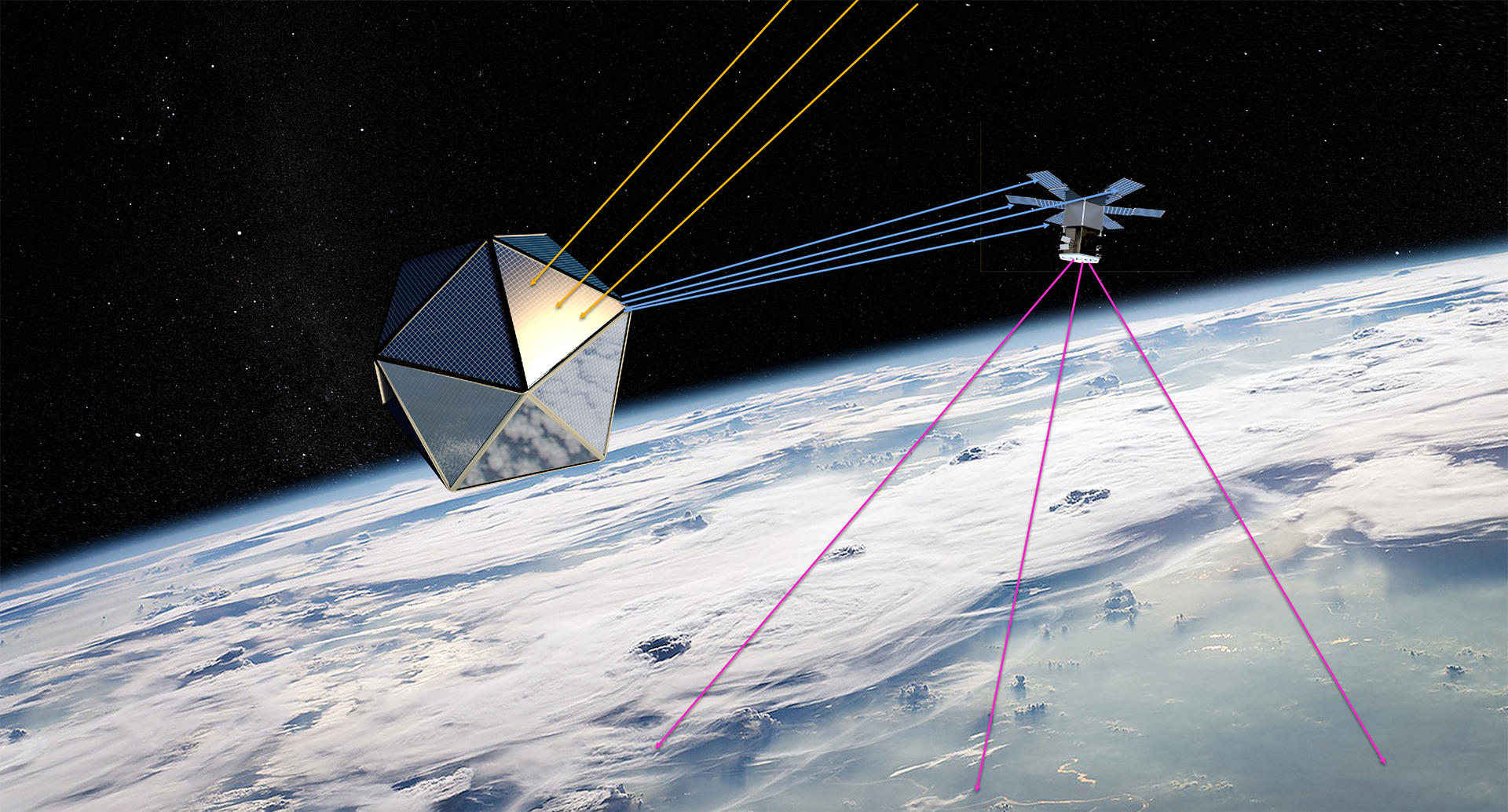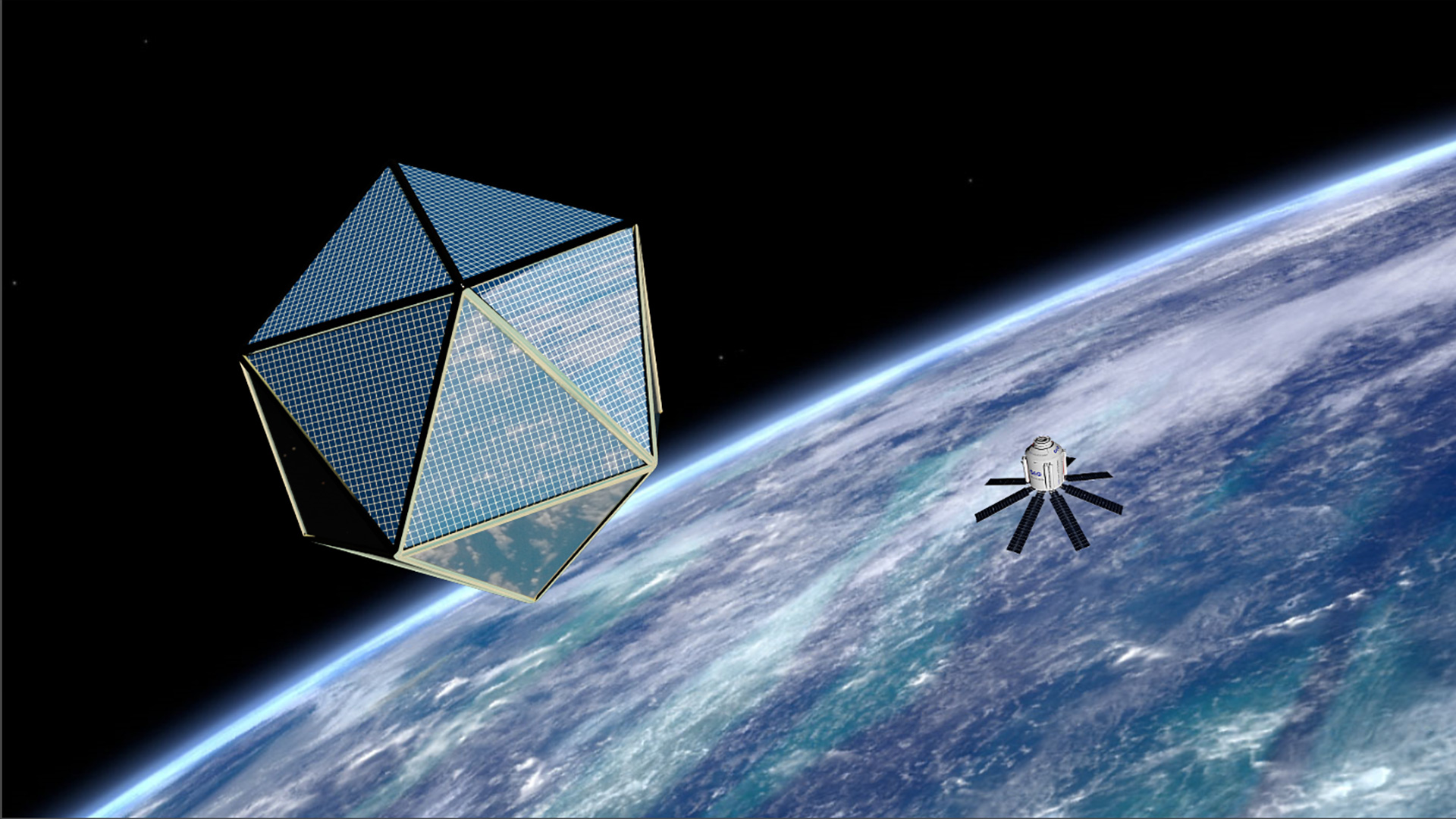The Space Option Star
Societal Context and Initial Technical Considerations
Addressing the Energy Dilemma provides the societal context for the development of the Space Option Star (SOS) as an art intervention in orbit. SOS is commonly used as the international Morse code distress signal (· · · – – – · · ·). In popular usage, SOS became associated with such phrases as “save our ship”, “save our souls” and “send out succour” but officially it does not stand for anything specific. In addition to SOS being an acronym for the Space Option Star project, we are using this project to send the message “save our spaceship” with “spaceship” being modern civilization. As all art is fundamentally political and, as the SOS project powerfully conveys a truthful and important message, it should impact the policy discourse related to energy. As an artwork, the Space Option Star will have a more flexible envelope for development than a pure engineering project and will directly involve the public in a variety of ways.
In the mid-1980’s and early1990’s the authors introduced and developed several large scale orbital sculpture concepts. [1] The publicity surrounding our projects and to that of Peter Beck’s Humanity Star launched on January 21, 2018 [2] and to Trevor Paglen’s Orbital Reflector launched on December 3, 2018 [3] exemplifies the novel and controversial aspects of deploying a visible orbital artwork, which indicates that even during the developmental stage, substantial public attention can be focused on the message of such a project.
As such, the SOS has a dual purpose: first, as communication, its mission is to alert and inform the world population about the Energy Dilemma and to call attention to the Space Energy Option and, second, its technical mission represents an early in-situ demonstration of SBSP which should help to justify its development cost.
In 2003, the European Space Agency (ESA) contracted the authors to re-examine the technology for large expandable structures in light of any new technological developments for the purpose of celebrating the 2016 Winter Olympics. [4] Our study included the examination in some technical detail of a large icosahedron to be built utilizing the chemically rigidized expandable structures (CRES) technology that had been under development in the United States and in Europe for over thirty years, although not yet used for a space structure of this dimension. [5] [6] In 2008, the idea of incorporating space solar power elements and other interactive technologies was introduced.
The space segment of the SOS project would perform an early demonstration of the basic technological elements of SBSP. Electricity generated by the icosahedron's solar arrays would flow to co-located microwave transmitters to beam power toward a companion spacecraft, which will then use it to transmit video and other interactive communications from orbit to public locations around the world such as art and science museums and schools.

Space Option Star in situ space solar power demonstration
Initial Technical Considerations
The suggested configuration of the SOS project elements builds upon a variety of studies (of similar aim) and technological concepts. For instance, the “power satellite” requires a (relatively) large size to collect sufficient solar power and to support a representative high-gain transmitter, as will be the case for operational items. On the other hand, in order to reduce costs, simplified designs are preferred. Here, the icosahedron geometry approximates an omnidirectional object, with the Sun illuminating similar surface areas at any given time, thus removing the need for an (active) attitude control system. Similarly, array antennas can track the receiver's position electronically, eliminating dedicated steering mechanisms.
The choice of this geometry is further supported by various factors, beginning with its classical simplicity: As one of the five Platonic solids, it is composed of 20 triangular facets, with 30 sides and 12 vertices. Vertices and sides are realized as nodes and tubular struts that form a skeleton supporting the membrane-like facets. As the satellite tumbles, the flat triangle's surfaces will reflect sunlight causing it to appear in the night sky as a blinking star. This way, the SOS would be visible to much of the world’s population during its limited orbital lifetime.
The above-mentioned study looked at the size, the mass, and the visibility of such an icosahedron with a 100 meter extension. It was determined that such a “star” would reach a magnitude of about -4.4 (which would correspond to Venus at its brightest), with orbits that allow a lifetime of approximately 30 days. Indeed, an 85-m sphere ought to reach -4.4 in magnitude at a slant range from a 760-km orbit; an equivalent icosahedron's lifetime estimate comes to some 24 days.
An icosahedron equivalent to an 85-m sphere ought to reach a magnitude of -4. at a slant range from a 760-km orbit, with an orbital lifetime estimated at some 24 days. As the object's orbit decays, it will become more brilliant, as suggested in this table.

Orbital characteristics of the Space Option Star
For reference to an actual object that is easily visible to the naked eye, one could compare the SOS to the International Space Station (ISS): 52 m long, 27.4 m high and 73 m wide. Due to its irregular shape and position relative to the horizon the observed magnitude of the ISS varies considerably. The SOS would be much larger and much brighter and, as with all orbital artworks, objections from astronomers are to be expected.
References
- Arthur R. Woods & Marco C. Bernasconi, 1991, The Orbiting Unification Ring-Space Peace Sculptures: Progress Report on Global Art In Space, Paper IAA-90-652 presented to the 41st IAF Congress, Dresden, Germany. October 6-12. Published in LEONARDO 24, [5] pp. 601-606]
- Rocket Lab defends Humanity Star launch, Otago Daily Times, 27 January 2018
https://www.odt.co.nz/news/national/rocket-lab-defends-humanity-star-launch
Accessed 10.3.2020 - Trevor Paglen, Orbital Reflector, Nevada Museum of Art
https://www.orbitalreflector.com Accessed 10.3.2020 - ESA Contract No.16188/02/NL/MV, The OURS Foundation
- Marco C. Bernasconi & Arthur R. Woods, 2009 , Lights in the Sky: Membrane Structures for Art in Space, International Conference on Textile Composites and Inflatable Structures, Structural Membranes 2009, E. Oñate, and B. Kröplin, (Eds) © CIMNE, Barcelona, Spain https://thespaceoption.com/publications/Lights_in_the_sky_PPH-09-078-1.pdf
Accessed 10.3.2020 - M.C. Bernasconi Consultants, Chemically Rigidized Expandable Structures, https://spaceoptionstar.space/chemically_rigidized_expandable_structures_mcbc.php Accessed 10.3.2020
See also:
Inflatable Technologies for Sculpture in Earth Orbit

